| |
|
||
| |
|
Go ahead, make a move!
|
|
The
Character Shop creates a robot to help support your health.
What's New
| Features |
Commercials | Resume | Realistic | Whimsical
| Scary | Animatronics
| Prosthetics | Puppets
| Waldo ® | Publicity
| TCS Fun | FX FAQ
| Reference | Contact
Us Photographs
on this pages used by permission. Except
where otherwise noted, all contents are the property of The Character
Shop, Inc.
and copyright 2018
Go ahead, make a move!
So, the challenge was: how does
Kineticor
promote and sell this technology? By hiring Rick Lazzarini and the
talented Artists and Technicians at The Character Shop to create a very
realistic, very specialized robot. One that lays in an MRI bed
and…moves the way an MRI patient would. 4 different types of
pre-programmed moves, each selectable, that demonstrate how a real
human might move…which allows Kineticor to apply their solution and
show how they’ve solved this problem.
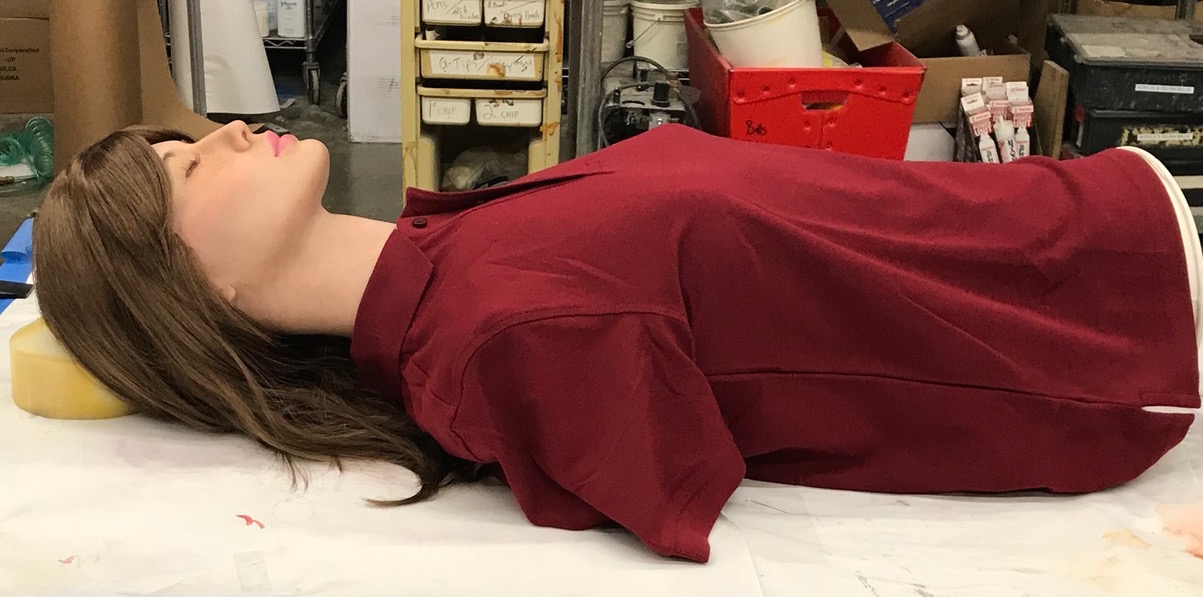
Kineticor’s
Jeffery Yu, in coordination with Siemens, provided the specifications
from which The Character Shop worked: It was to be a Female human
replica, believably realistic, with a flexible skin, just the torso, no
arms, no legs, clad in a polo shirt, and remotely controlled to perform
4 different types of typical movement: Shifting, Nervousneness, Falling
Asleep, and even display a slight tic/tremor with Dystonia (which
actress Katherine Hepburn famously exhibited in her later years).
The TCS team started out with a choice of basic female forms, then
modified the Client’s choice until approved. From that, a master
Silicone mold and Epoxy/glass jacket was made. The mold was cleaned,
released and prepared then a special mix of silicone, having just the
precise durometer, tint, and thickness was made. This formed the
robot’s outer skin.
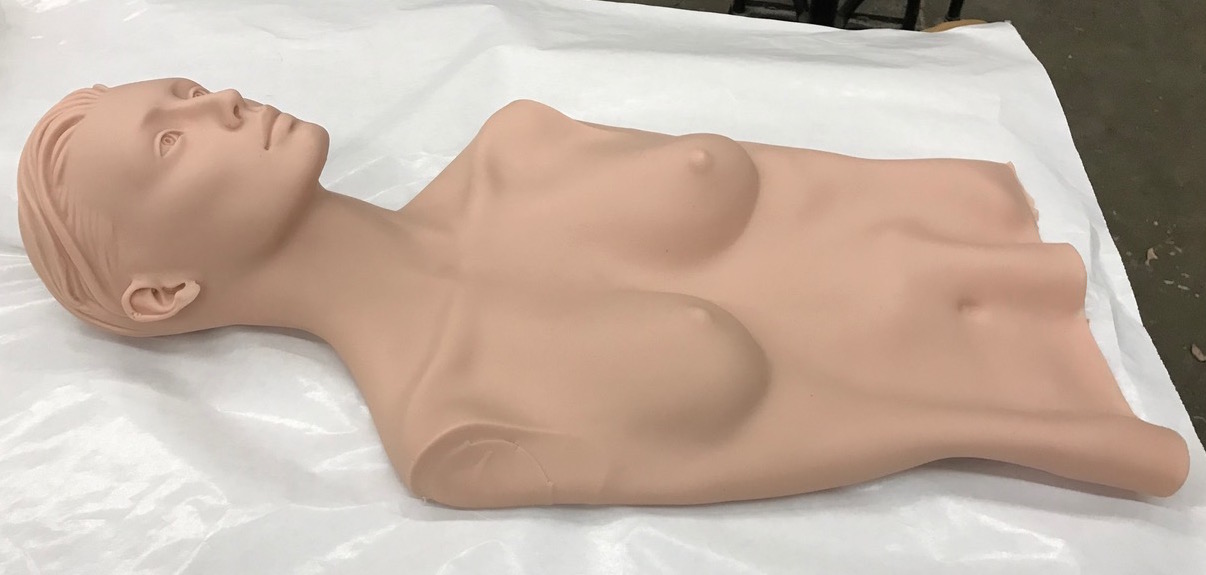
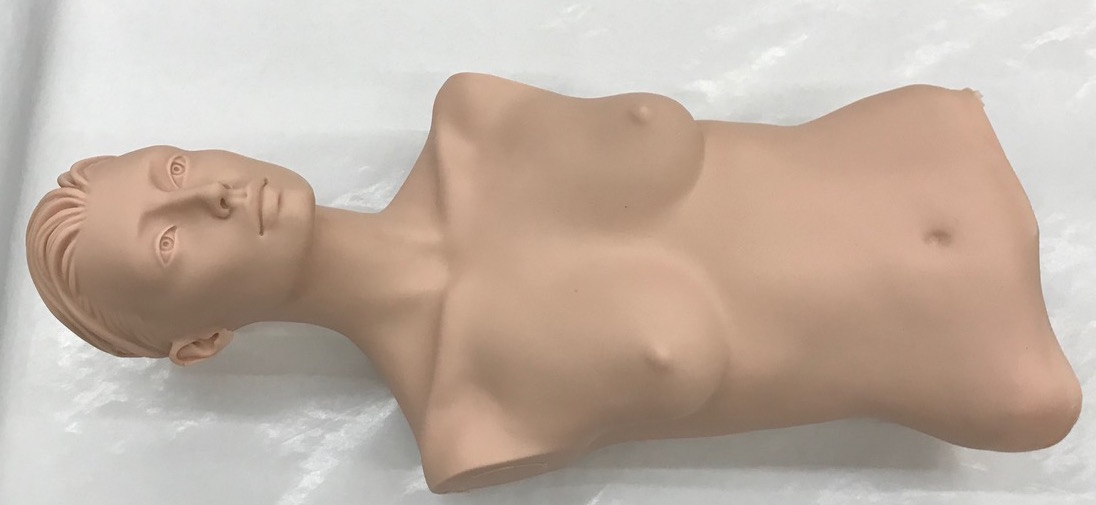
Another epoxy and fiberglass shell was made to serve as her inner
‘skeleton”, or shell, to house the battery, circuit boards, and
actuators needed internally. All the mechanisms had to be
self-contained.
In the meantime, 3D mechanical designs were worked on and completed in
Autodesk Inventor, with working 3D imagery being able to be run “live”
through their motions to simulate what they would do in real life. From
the dimensions and structures depicted in the Inventor files, actual
mounts , couplers, plates, and parts were machined out of Delrin
engineering plastic. Meanwhile, actuators were spec’ed, ordered, and
installed into the inner structure. Two linear actuators provided Head
Up/Down and Head Tilt movements, while a rotary actuator provided head
turning Left/Right. Each actuator was mounted compliantly, to give as
natural a motion as possible, and that included the use of nylon rods,
which flex the way human spinal columns do.
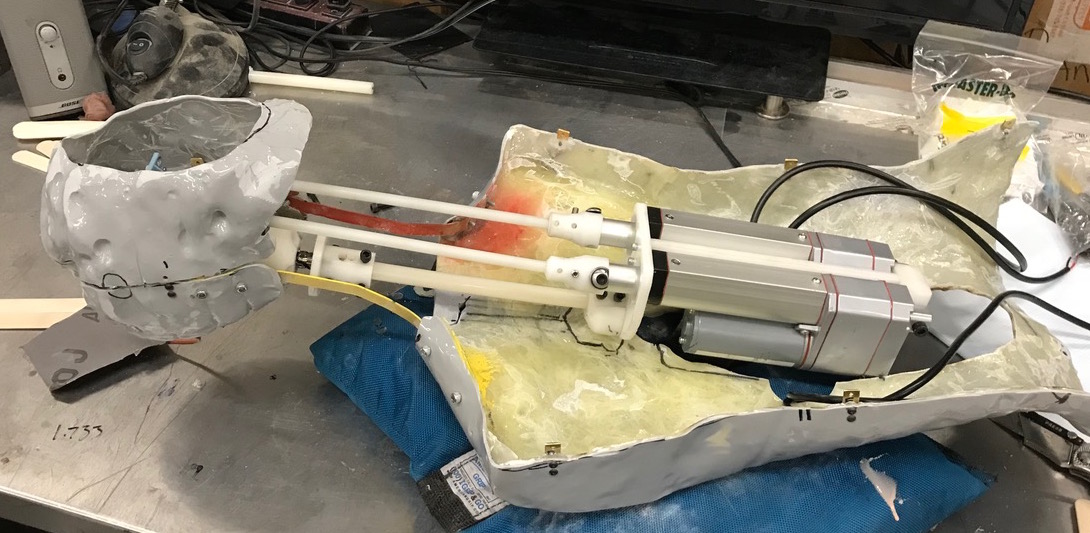
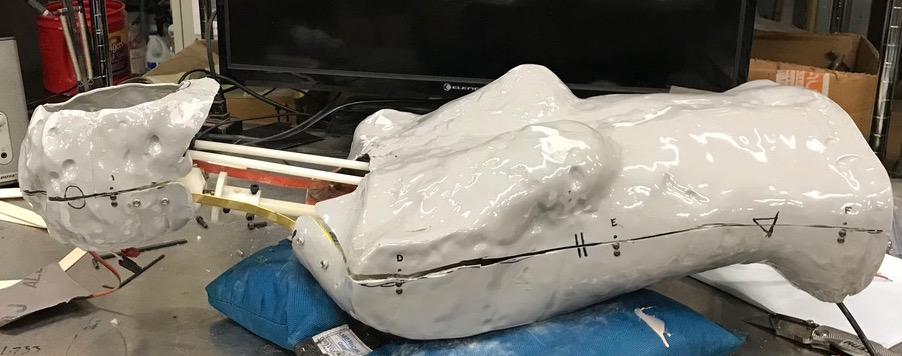
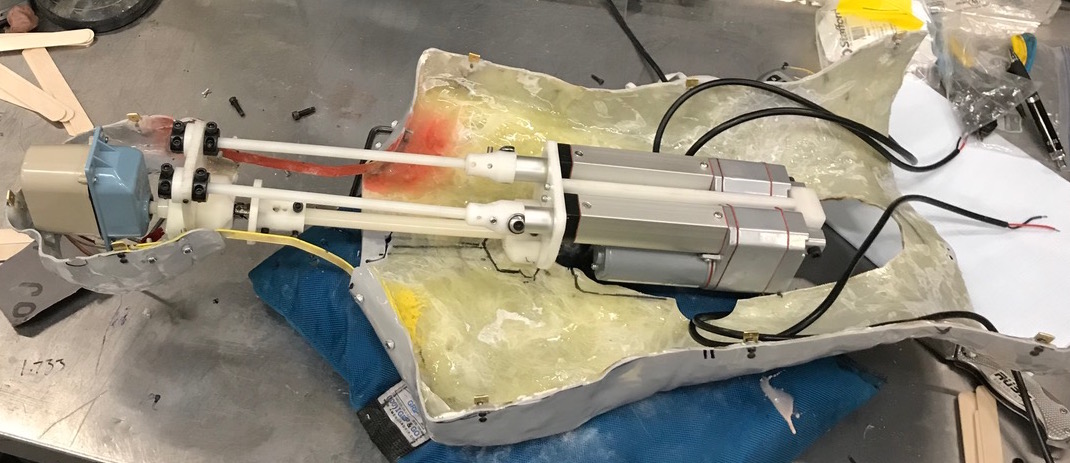
The result was a solid success, with enthusiastic approvals from
Kineticor and Siemens alike. The Character Shop’s experience in
blending Technology and Art has benefitted many films and commercials,
and it’s clear that it can benefit Medical Technology as well.
Home
Photographs and text may only be re-published with written permission.
All rights reserved.